The Department for Infrastructure commissioned a report from the Steer Group in 2021 which found that the vast majority of households in Northern Ireland have access to a driveway (“circa 80%”). But that also means that 1 in 5 dwellings do not have off-street parking and therefore are currently precluded from being able to charge an electric vehicle at home.
The report also acknowledges a dramatic rise in urban areas, stating that “60% of households have no access to a driveway in Belfast”. Presumably there will be similarly high levels in the centres of our other towns and cities around NI.
But is home charging really necessary? While the much needed public charging network is beginning to grow at last in Northern Ireland, there are a couple of reasons why it’s very desirable to be able to charge at home, as well as on the go.
Cost – The ability to charge your EV from your own domestic electricity supply is almost always the most cost effective choice and this difference between Public and Private on-street charging is not always obvious to decision makers. While there are still no agile tariffs available in Northern Ireland, EV drivers can take advantage of Economy 7 rates (around 15p / kWh at the time of writing). That compares to 49p / kWh for NI’s largest public AC charging network. So filling a 50 kWh battery electric vehicle costs around £7.50 charging at home, versus around £24.50 on a public charger.
Convenience – One company recently shared that 50% of their customers said they will only move to an EV when they can charge at home. Bringing home charging capabilities to drivers without off-street parking will ease the switch for many, making it more convenient and encouraging the move to electrified transport. While not every homeowner can guarantee to get parked outside their own home every night, most of our members only charge a few times per week (just 18% said they charge every night in our recent survey).
Solutions – The motivations are clear then, so let’s look at the solutions which mainly fall into 2 broad categories, ducts/gullies and arms/bridges.
Gul-e
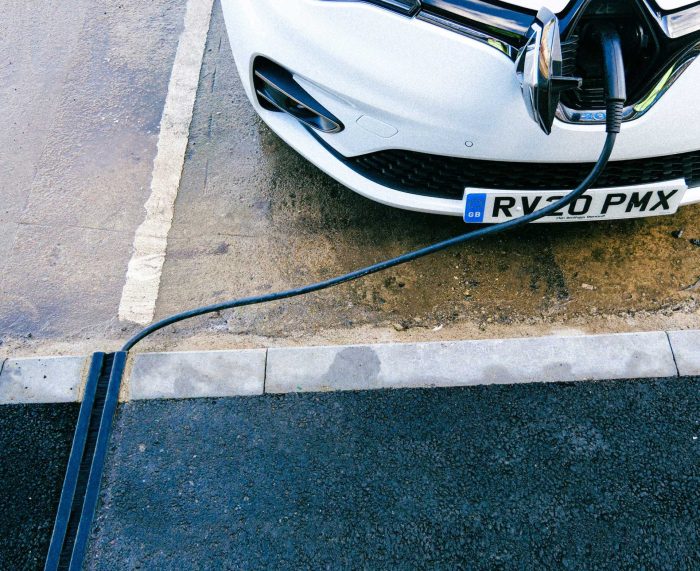
Gul-e is a steel slotted channel with a brush cover. The system has been developed by ODS, Oxford City Council’s local authority trading company. Central Bedfordshire, Cherwell District and the London Borough of Bromley all have trials of the Gul-e solution underway with several others due to start shortly. Oxfordshire have completed their trials and are now setting up the processes to allow a general roll-out, aiming to start in early 2024..
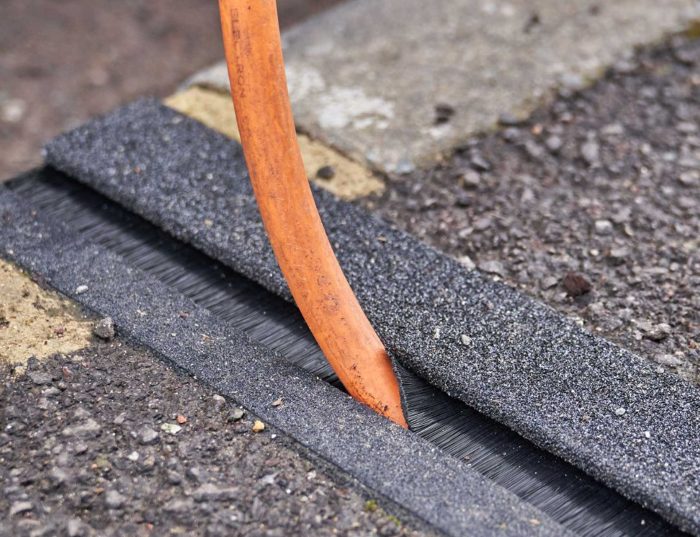
Kerbo Charge
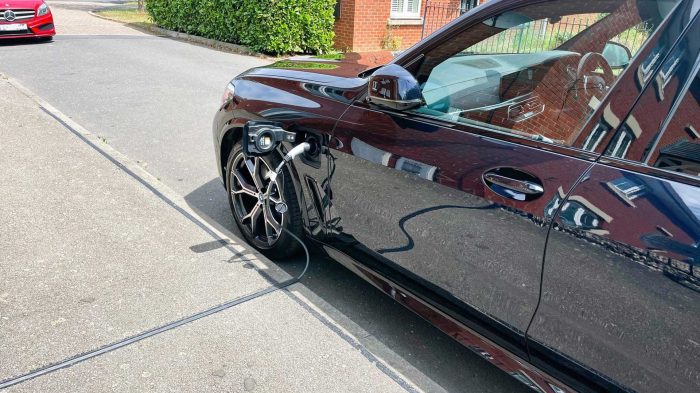
Kerbo Charge is a 32 mm deep polymer channel with a unique snap closing lid (see video below). It can be installed into bitumen, paving stones and brick and can cater for uneven surfaces too. The company is currently working with 15 councils including Milton Keynes, Durham, Bath & North East Somerset, East Lothian and Central Bedfordshire.
Charge Gully
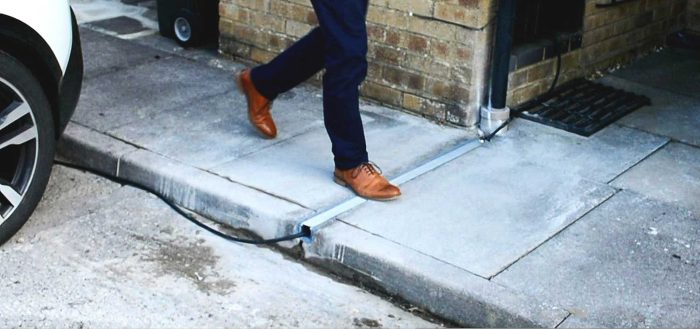
Charge Gully is a cable duct with a lockable lid and the company told us they had chosen metal to keep the product as sustainable as possible. As with the Gul-e this means it’s a rigid cable carrier, although the firm says it can still be fitted to uneven pavements with some remedial work on either side. Charge Gully told us it is working with Newport City Council and hopes to launch a trial before the end of this year.
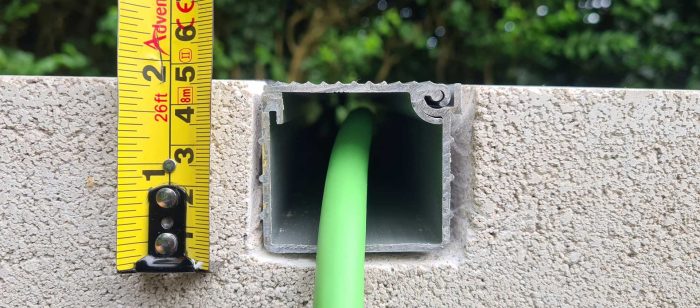
Pavecross

Pavecross, from Electrica, is a metal channel that contains the EV charge cable when in use. It is installed at a depth of 80mm on recycled tyres and sits flush within the pavement. The rotational mechanism is opened and closed via a lever. The makers told us that they have developed, tested and patented their solution over the last three years and that the company is set to become a Statutory Undertaker, in effect acting like any other utility company. It will install, own and maintain the channels, absolving councils of any long term maintenance worries. Pavecross aims to have a low up-front installation cost, plus a monthly or quarterly subscription and the company is currently working on several trials.
ChargeArm
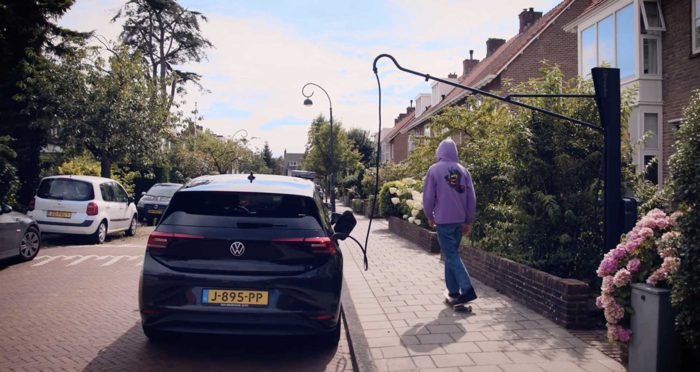
ChargeArm is a Dutch system that uses a folding frame to carry a charging cable across the pavement (see the video below). The makers say the arm can bridge a distance of around 2.3m with a minimum height of around 2.0m. There are free standing and wall mount options. Made from recycled aluminium and stainless steel, ChargeArm has a five year warranty.
ChargeBridge
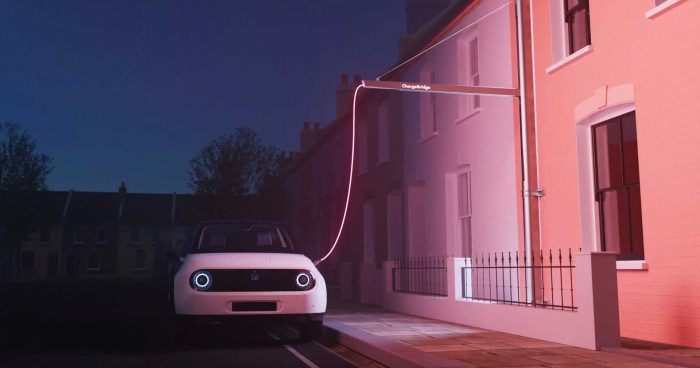
ChargeBridge from Nodum is another bridge style system that carries the cable at a high level before dropping down to the car. The company says its system is well suited to terraced homes with narrow curtilages and that they have “trials in controlled environments planned for this Autumn”.
Other Info
Nearly all the companies above work with local authorities to arrange the permissions before installing their device. We have spoken to 5 out of the 6 and they all expressed a desire to start trials in Northern Ireland.
The cable gully products range from around £1,000 to £1,500 installed. The homeowner would also need to install their own 7 kW charger too. With the current gap between private and public charging costs, the break even point could be from around 2,500 miles when compared to using the most expensive DC rapid chargers here, and around 22,000 miles for the largest AC network.
Public liability insurance costs will also need to be considered too. Perhaps in future this could form part of a standard house policy to cover these solutions.
Here are some other solutions, including a flat cable product.
- FlatPower Ultra Flat Charging Cable
- Electric Vehicle Charge Channel
- Stormguard Heavy Duty EV Cable Channel
If public on-street chargers offered more competitive pricing overnight then this could help the situation too. Operators like char.gy already use time of day tariffs in GB to reduce costs for drivers. Provided any on-street metering issues could be solved, we would like to see something similar being offered by CPOs here.
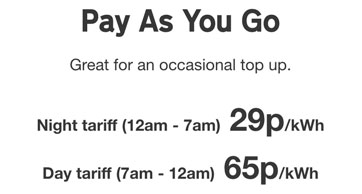
The Law
Under Article 73 of the Roads (Northern Ireland) Order 1993 running a cable across a pavement in NI is unlawful without the consent of DfI or obtaining a street works licence.
A street works licence is usually only procured by utility companies laying gas mains, water pipes or electricity cables. It’s an onerous process and requirements include holding £10,000,000 public liability insurance cover, maintaining records of the works and paying around £400 in fees. All these hurdles mean this will be prohibitive for homeowners who simply want to run a cable from their house to a car on the street.
Looking at the position in England, running a cable across a pavement is only unlawful if the person running it from their house cannot prove that they had taken all necessary means to give adequate warning of the danger. So if you properly warn people and mitigate any dangers (as most modern on-street charging solutions would) then most local councils in England (who administer the street works regime under the Highways Act 1980) would seem to permit on-street EV charging.
In fact this has led Hampshire County Council to publish its Electric vehicle charging guidance for residents which states that “The most suitable solution for getting the cable from your property boundary to your vehicle safely is to use a suitable cable protector”. So in one part of the UK the solution is as simple as shown in the pictures below, while in NI it appears to remain completely impossible by any legal means.
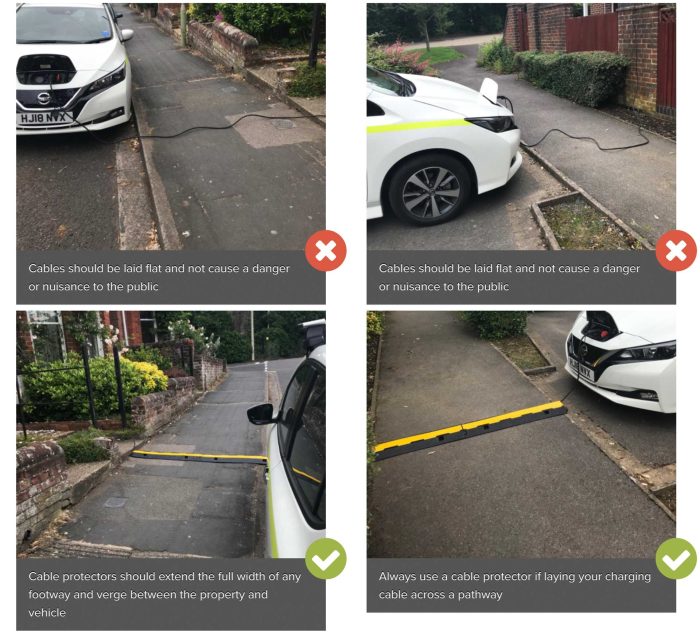
Outdated
So then, we must question if the street works licence regime is really appropriate for this kind of application. Clearly the legislation was never designed with this in mind and it’s time for new thinking to bring us into line with GB.
When we look at the width, length and quality of existing pavement drains in NI (photos below were taken recently in Lisburn), it’s clear that many of the solutions above are superior, so it’s hard to see any valid objections with their design.
The ZEV Mandate sets out the road ahead for electric vehicles sales and we need a much more fit-for-purpose process to remove the barriers to entry for home owners without off-street parking.

The Future?
Representatives from DfI have said that any future policies or legislation around crossing the pavement cannot be seen to favour an individual company or product, so it is good to see the variety of different solutions now available.
Northern Ireland has an advantage over GB as we have a single body responsible for the roads and pavements here. While there would still need to be involvement from the 11 councils around planning permissions, why not cover these solutions under permitted development rights in the future.
The Northern Ireland EV Task Force Action plan states that “charging solutions must also be found for those without access to a driveway, particularly, in our urban areas” and the final paragraph of the document promises further action points around this issue.
While these solutions will not suit every location without off-street parking, they will work for many, allowing more drivers access to the air quality and running cost benefits of an electric vehicle, whilst helping to provide the convenience of home charging and accelerating our transition to net zero.

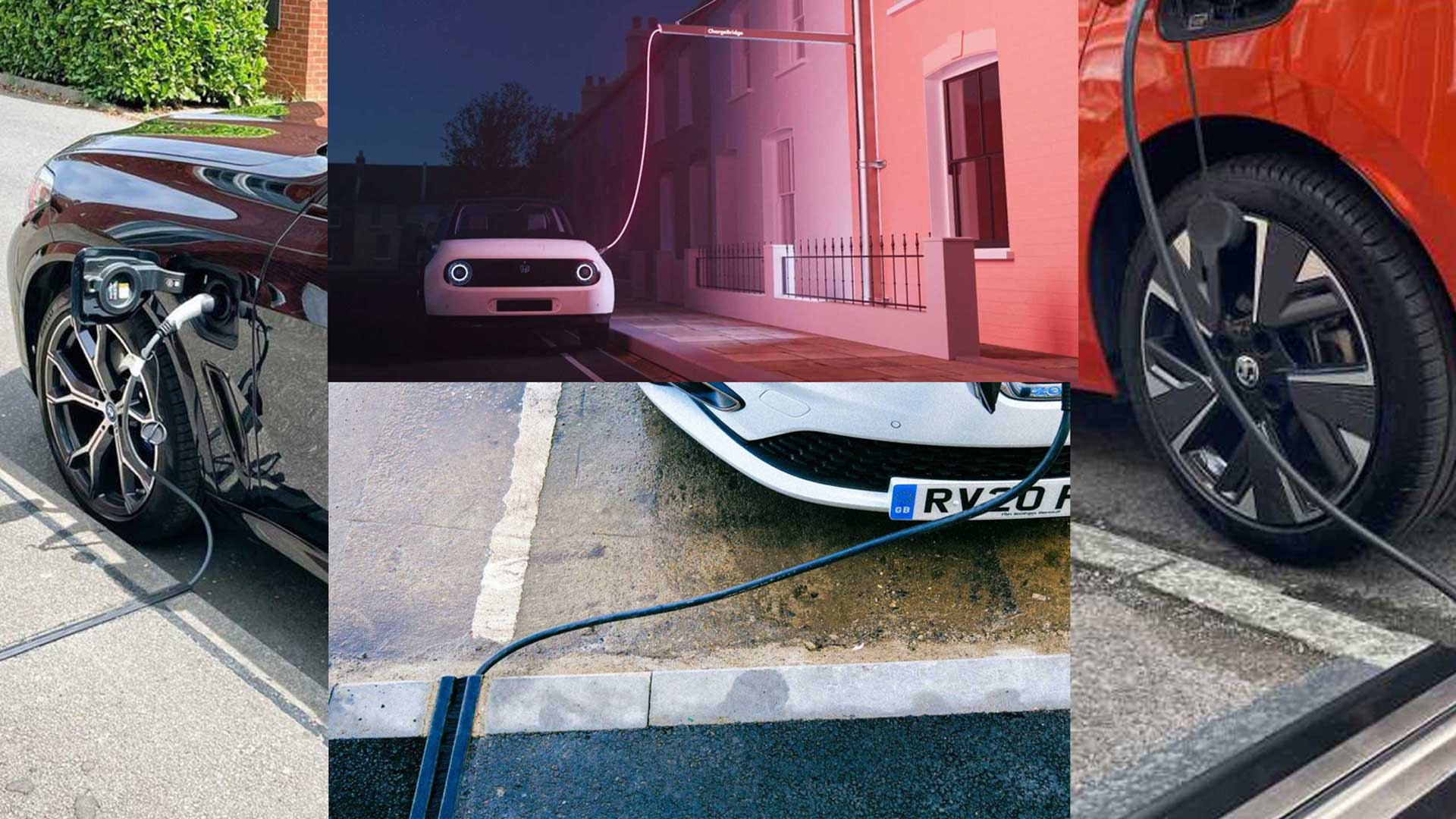
One response
I agree that we do need to move forward on the EV charging at home solutions. The best that i personally have seen so far is the Kerbo solution. The duct type systems are of a higher build quality than most of the council drainage solutions.
Come on DFI we need to move ahead with the new technologies or be left back in the ICE age.